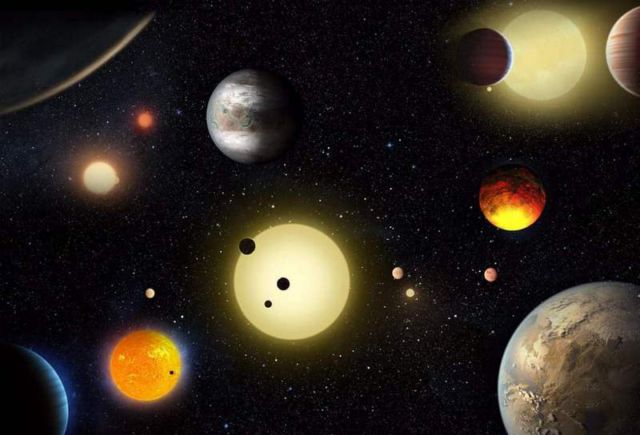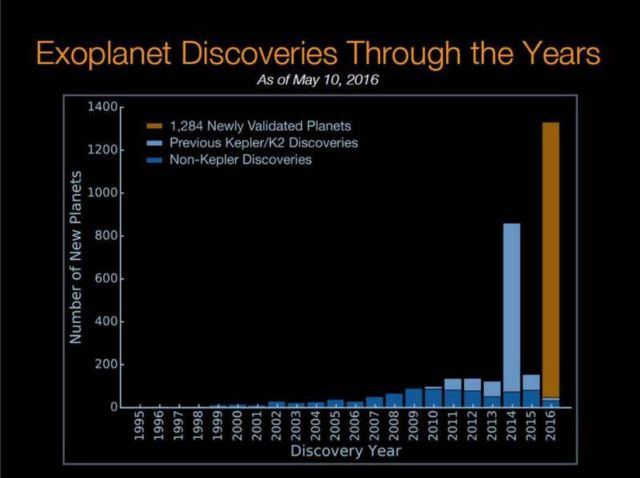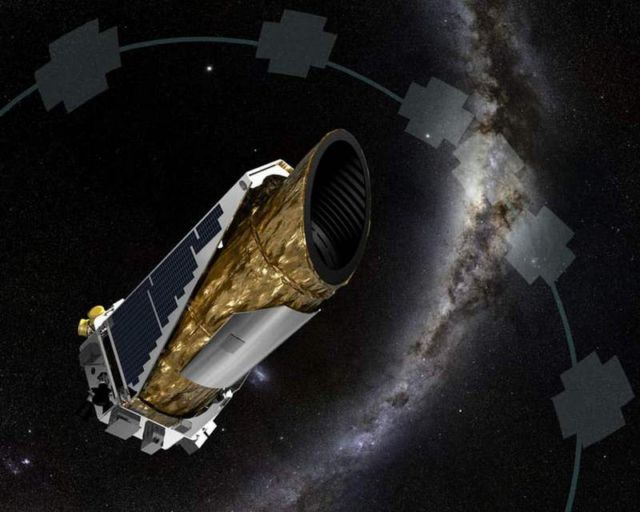NASA’s Kepler space telescope mission has just verified 1,284 new planets, doubling its haul in largest exoplanet discovery ever. 2,325 exoplanets and counting…
The single largest finding of planets, beyond our solar system, to date!
The above artist’s concept depicts select planetary discoveries made to date by NASA’s Kepler space telescope. Credits: NASA/W. Stenzel
Ellen Stofan, chief scientist at NASA Headquarters in Washington, said:
“This announcement more than doubles the number of confirmed planets from Kepler. This gives us hope that somewhere out there, around a star much like ours, we can eventually discover another Earth.”
Analysis was performed on the Kepler space telescope’s July 2015 planet candidate catalog, which identified 4,302 potential planets. For 1,284 of the candidates, the probability of being a planet is greater than 99 percent – the minimum required to earn the status of “planet.” An additional 1,327 candidates are more likely than not to be actual planets, but they do not meet the 99 percent threshold and will require additional study. The remaining 707 are more likely to be some other astrophysical phenomena. This analysis also validated 984 candidates previously verified by other techniques.
“Before the Kepler space telescope launched, we did not know whether exoplanets were rare or common in the galaxy. Thanks to Kepler and the research community, we now know there could be more planets than stars,” said Paul Hertz, Astrophysics Division director at NASA Headquarters. “This knowledge informs the future missions that are needed to take us ever-closer to finding out whether we are alone in the universe.”
The chart shows the number of planet discoveries by year, of the exoplanet search, for more than the past two decades . Credit NASA
Kepler captures the discrete signals of distant planets – decreases in brightness that occur when planets pass in front of, or transit, their stars – much like the May 9 Mercury transit of our sun. Since the discovery of the first planets outside our solar system more than two decades ago, researchers have resorted to a laborious, one-by-one process of verifying suspected planets.
“Planet candidates can be thought of like bread crumbs,” said Morton. “If you drop a few large crumbs on the floor, you can pick them up one by one. But, if you spill a whole bag of tiny crumbs, you’re going to need a broom. This statistical analysis is our broom.”
Kepler space telescope. Credit NASA
The research was published in The Astrophysical Journal.
source NASA








Leave A Comment